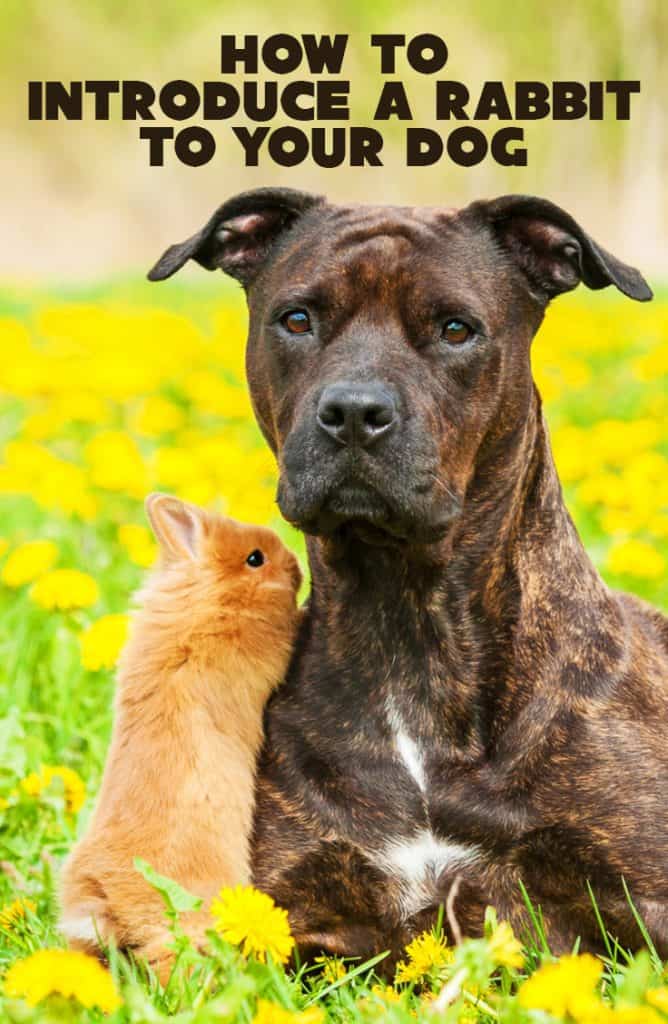“This post contains affiliate links, and I will be compensated if you make a purchase after clicking on my links.”
Rabbits and dogs can live happily together. How do you introduce a rabbit to your dog? Read our tips on how you can successfully introduce your pets and make them best friends.
Rabbits and dogs, contrary to popular belief, can become inseparable companions. Although the prey and predator pairings contradict nature’s laws, rabbits and dogs can coexist.
Because you can’t altogether remove a dog’s innate prey instinct or a rabbit’s natural flight instinct, the key to establishing a healthy relationship between species is how you introduce them.
We’ve compiled some helpful tips on how to introduce your rabbit and dog successfully.
Predators vs. Prey
Before bringing a rabbit or dog into your home, it is suggested that you think about it carefully. You must understand that dogs are predators by nature, whereas rabbits are prey. Introductions may take longer than expected, and there are no guarantees that they will be able to bond.
Familiarize yourself with the dog breed that will be introduced to a rabbit. Certain dog breeds are “hard-wired” with a strong predatory drive. Hunting and attacking small animals like rabbits is in their nature.
Make Sure Your Dog Listens to Your Commands
If your dog does not respond well to your voice commands, you should make efforts to guarantee that it does. This is crucial because if the dog starts chasing or lunging at the rabbit, you will know that your dog will listen to your instruction to stop immediately.
Suppose your dog’s behavior is inconsistent, or commands are regularly disregarded; you can never be sure that the dog will not hurt the rabbit.
Small animals with quick movements, such as rabbits, can trigger a dog’s strong prey drive in a matter of seconds. It’s also far more difficult for a dog with a high prey drive to regulate or reject its hunting tendency.
Steps To Introduce a Rabbit to Your Dog
A successful introduction will take time as they learn to adjust to one another. The initial meeting between your dog and your rabbit will be crucial, as it will set the tone for their future relationship. How do you properly introduce a rabbit to your dog?
Prepare Your Dog
A good introduction is also dependent on the dog’s nature. When introducing your dog to a rabbit, the objective is for the dog to contain its excitement.
An overly excited state limits a dog’s ability to control its instincts, making it more likely to exhibit behaviors that cause the rabbits to flee, increasing the bunnies’ stress and the dog’s pleasure.
Find a Neutral Space
If you have two different pets that have not met, the last thing you should do is allow them to roam freely in the house or backyard together.
Find an area in your home that’s not being used or occupied by either animal. It should also be an area where you have control over the interaction. Any territorial behavior will be diminished or reduced as a result.
Before introducing the rabbit to a neutral environment:
- Put your rabbit in a crate or cage.
- Allow the rabbit to acclimatize in the space for at least 12 hours before introducing the dog.
- Delay or postpone the introduction process if the rabbit displays signs of stress.
Signs of Stress in Rabbits
If the rabbit is not displaying any signs of distress, you can bring the dog into the neutral zone but on a leash. Allow a family member to assist you in carrying the dog into the room while you maintain a close check on your rabbit’s reaction.
Keep an eye out for symptoms of stress in the rabbit. Stress can affect their health and welfare. The following are signs of stress to be aware of:
- Shaking
- Head-bobbing
- Frozen or hunkered down position
- Aggressive behavior towards you and your dog
- Biting the cage/crate bars, overgrooming, showing changed eating or bathroom habits, and constantly circling the enclosure are all anxious signs of a rabbit.
Remove your dog from the room and let the rabbit calm down if it is kicking, breathing heavily, or attempting to flee.
Introduce Them Slowly
Do not rush the introduction. Place your rabbit in its cage before allowing your dog to enter the room cautiously. Allow your dog to explore the rabbit’s cage and will enable it to become accustomed to the rabbit’s scent and visually seeing the rabbit.
Your demeanor needs to be calm, and your movements need to be slow. Use encouraging phrases to encourage the dog to explore in a non-dominant and friendly manner. Be in control of your dog on a leash and if your pup becomes too excited, stop the interaction immediately.
The purpose of this task is for the rabbit to remain calm. Rabbits are naturally fearful and anxious animals, especially when they are exposed to a new environment. The rabbit will realize that it is safe and will not be eaten if you keep your dog on a leash.
Keep the Sessions Short
Keep the introductory sessions short, to a minimum of 10 minutes. With more time spent together, the dog is more likely to become too enthusiastic, and the rabbit is more likely to become anxious, aggressive, or have its stress level grow.
Practice the Routine
Understand that it is okay if your pets don’t get along right away. It’s a good idea to practice introducing your dog and rabbit to one another until it becomes second nature. Your pets will eventually become accustomed to seeing and recognizing each other’s scents.
Remove the Rabbit From Its Enclosure
Once your rabbit and dog have become friendly and accustomed to each other, you can remove the enclosure. However, be cautious not to give the dog complete freedom of movement. Maintain control of the dog by keeping it leashed.
Allow the rabbit to gently approach the dog rather than the dog coming to your bunny. If the rabbit still decides to flee, it means it is still uncomfortable seeing the dog, and you should end the session.
Separate Their Feeding Areas
The most important thing to do is keep your dog and rabbit apart at mealtimes or when there’s food nearby. Increased tension or excitement can be distracting, invasive, or unpleasant and negatively associated with eating.
Rabbit nutrition and dog nutrition are not the same. Your dog eating rabbit pellets will cause digestive upset and pain. Not only will your dog experience nausea and stomach pain, but it will experience a loss of appetite, vomiting, drooling, and tiredness.
Rabbits eating dog pellets will suffer irreversible digestive upset that could prove fatal. Rabbits are grazers who will eat bits and pieces of almost everything they can. Ensure that your rabbit and does not have access to your dog’s meals.
If you believe one of your pets ate the pellets from the other, seek medical attention immediately.
Dogs and Rabbits Can Coexist
To ensure that your pets get along, you must be patient, persistent, and, most importantly, realistic. You shouldn’t expect them to become best friends immediately.
Allow for a natural progression of the friendship. To ensure both pets’ safety, never leave your pets alone together until they have bonded.
Enjoyed this article? Pin it!















